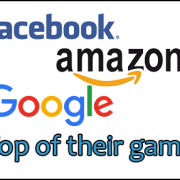SEO & maximising the potential of your content
Why good content needs the backing of technical SEO for your website
It is well known that Google places a high value on regularly uploaded, good quality, new content, such as blogs, on websites.
It has algorithms to assess quality no longer simply by focusing on the frequency of key words or phrases, but also on the information your blog contains.
However, it is also important that the technical content behind the blogs is done correctly. They won’t be found or listed unless they are correctly indexed by the search engine.
You can find out whether a blog has been indexed with the help of a Google tool currently being updated and at beta stage. It is called the Index Coverage Report and will provide an analysis of pages that have been successfully indexed, not indexed because of an error or have been blocked.
There is a detailed help page that explains each status found in the report.
Combined with Google Analytics it makes it possible to analyse any patterns in the indexing – or not- of pages on your website.
The sorts of issues that may affect correct indexation are the numbers of internal links in blogs, the length of pages and meta tags.
If there are several blogs with similar content on the same topic you need to assign priority to one of these using what are called canonical tags so that Google knows which URL is the main page to consider.
It is also important to consider the speed at which a page loads. Slow speeds can significantly affect bounce rates, since site visitors are impatient and will leave if a page takes too long to load.
If all this sounds too much for you as a website owner, that’s what we’re here for.


